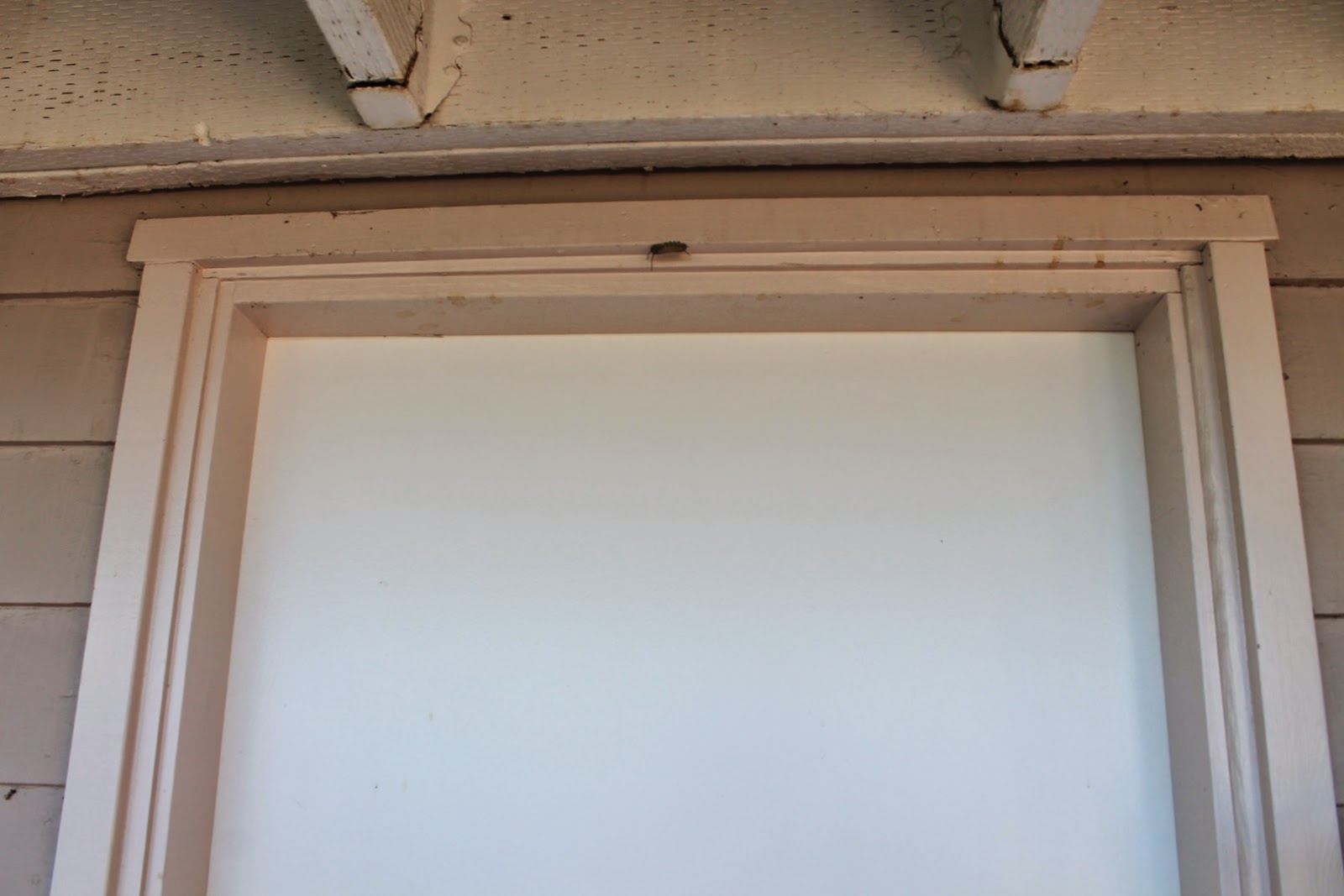In
2014 I noticed that after monitoring the caterpillars, one had decided to spin
its cocoon on the doorjamb of the doorway into my garage. What astounded me was
the trek this little guy made. From the milkweed plant it is 18-feet and 4-inches
across my erratic, pot-holed lawn. From there he needed to climb up a 5-inch
concrete rise to get to the top of the flagstone deck. Crossing the flagstone
is another 9-feet and 3-inches to get to the garage door. Then he climbs straight
up the door 8-feet, moves over 1-foot to settle comfortable (we hope) in the
dead center of the top of the doorjamb. If you tally that up, it’s a total of
37 feet - a hell of a journey. What possess them I have no idea. Certainly some
make their cocoon closer than this, but this is a reminder that nature offers a
spectacular lesson if we choose to notice the small things. With a typical
lifespan of a paltry 2 to 6 weeks (some live 6 months) when you see them,
remind yourself of the singular beauty of life, the intense but short life
stages they go through, and that the will to survive is strong. So wing on over
to one of these Central Coast spots to take a closer look and be astonished by
the world around you.
San Luis Obispo:
The
largest butterfly preserve on the Central Coast is the Pismo Beach Butterfly Grove (Highway 1 just south of North Pismo
State Beach Campground, 805/473-7220), which sees the return of butterflies
each November through February when tens of thousands of Monarch’s migrate to
this small grove of eucalyptus trees near the beach to mate. On average there
are about 30,000 of these silent winged creatures and the trees are often
transformed into brilliant shades of orange after their 2,000 mile journey to
get here. Docents staff the area and give brief but fascinating talks about the
butterflies and their very unique but short lives. It’s free to walk into the
grove, free to hear the docents and there’s a short boardwalk that leads to the
beach near a large picnic area where you hit the low sand dunes and cypress
trees near the waters edge. Parking is along the side of the road so use
caution when crossing as this is a busy street. Monarchbutterfly.org
Santa Barbara:
Monarchs are
usually found in Goleta from mid-November through mid-February and
docents are available on weekends from 11a.m. to 2 p.m. during these months.
This is the smallest of the three groves and is available for
viewing every day during daylight hours and it’s free. The Goleta Butterfly Grove (Ellwood Main)
is in the Sperling Preserve on the Ellwood Mesa in Goleta, just north of
downtown Santa Barbara. Free parking is available. Goleta Butterfly
Monterey:
The
Pacific Grove Monarch Preserve (1073
Ridge Rd., Pacific Grove) is located behind a salmon-colored butterfly-themed
motel. There are, on average, about 10,000 butterflies that come here yearly,
and why not, Pacific Grove is stunningly beautiful! The best time to view
these silent creatures is October through March. There’s usually a docent on
hand to answer questions and explain about the short life of these amazing
creatures. There is a free street parking nearby and the grove is free to enter. Pacific Grove Butterfly
 |
| Also from my backyard. Absolutely stunning! |





No comments:
Post a Comment